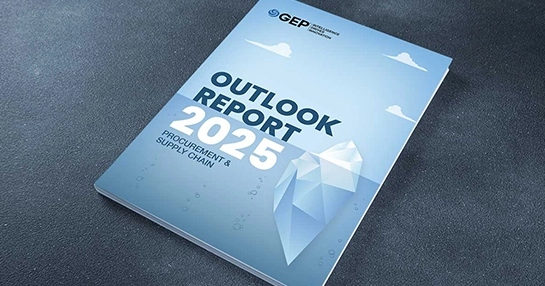
Procurement Under Pressure? 10 AI Platform Features That Keep Global Operations Steady
- Leaders need to bring procurement management under one intelligent control tower.
- Agentic AI learns from outcomes and guides decisions within clear guardrails.
- The right procurement software drives performance, protects reputation, and keeps supply steady.
October 31, 2025 | Procurement Software 4 minutes read
Procurement has gone beyond placing purchase orders or chasing supplier quotes. Today, it’s all about how much control procurement leaders have over cost, risk, and how a business runs when the market turns unpredictable.
For large global enterprises, a single missed delivery or compliance lapse can stall production and send costs spiraling.
The problem is that most organizations are still trying to manage this complexity with systems that were never built for it. And procurement leaders end up reacting instead of steering. That’s where AI-driven procurement platforms make a real difference.

They automate the grunt work, surface insights that matter, and bring every sourcing, contracting, and supplier activity onto one screen. The best of these systems go a step further. They use agentic AI to anticipate risks, learn from outcomes, and coordinate decisions automatically within defined guardrails.
In this article, we’ll look at the 10 essential features that separate a true enterprise-grade procurement platform from the noise for better control, agility, and measurable results.
Procurement shouldn’t break when markets do.
AI keeps it consistent, adaptive, and transparent, all in one platform.
10 Essential Features of a Resilient Procurement Management Platform
Here’s what separates a serious AI-powered procurement system from marketing noise.

1. Mobile-Native Cloud Platform
Procurement shouldn’t have to wait until employees get back to their desks.
A mobile-native system means you can check a contract, approve an order, or flag an exception – from anywhere – securely on your phone.
Vendors that only offer a “mobile-friendly” or “mobile-responsive” web page don’t cut it. Ask for a test: can you review and approve a purchase order offline, get a push notification, make a change, and see it reflected instantly in the ERP?
If not, it’s not “enterprise-ready.”
2. Intuitive Interface
Nobody should need a lot of training just to create a requisition. Your procurement platform needs to have an interface that is clean, with role-based access, and with dashboards reflecting changes in real-time. Company-wide adoption depends on this – how fast and easy it is to create and process requests, expedite pending approvals, mitigate supplier risks, and handle exceptions. If users find it clunky, they will push back.
3. Robotic Process Automation
Invoice matching is still one of the most repetitive jobs in procurement. RPA takes care of copy-paste work and pushes exceptions to humans. Not just that, think of everything that can be automated, and it should be done.
The detail to check for here is reliability. You must get the same results every time. Even a 1% failure rate can cost you millions.
Platforms that can’t show an audit trail are risky. Good systems show logs, retries, and error handling.
4. Big Data Analytics
If a report takes a day to refresh, it’s already stale.
Procurement teams don’t just want pretty charts. They need to know which suppliers are slipping, where spend is consolidating, and how external factors like freight rates are moving in real-time.
The right procurement management platform delivers near real-time analytics tied directly to processes, systems, and transactions.
5. Artificial Intelligence
Generative AI and agentic AI sound impressive. But what truly matters is how quantifiable the returns are over time.
Your platform must keep up. Not just with sourcing, supply, and management, but with how your business and the markets it serves are constantly changing. Your tech stack and AI technology must be able to self-adapt, learn, and evolve. That’s where Agentic AI shines.
Keep your approach bounded: give AI clear guardrails, log every action, and require human sign-off when needed.
6. Multilingual Capability
Global companies can’t run supplier portals in English alone. Systems need to handle contracts in widely spoken languages in the world: Mandarin, Hindi, Spanish, Arabic, French, German, Russian, Indonesian, etc., and extract terms correctly. Terms like “penalty” or “liquidated damages” can’t afford to be misread.
7. Automated Workflows
Modern platforms let procurement teams build workflows visually, with thresholds and escalation rules. Test how long it takes to change an approval chain, add more rules, or integrate more tools into automation. If it takes weeks, you’ll be stuck with rigid processes.
8. Supplier Management
Supplier onboarding, compliance, risk, contract management, and supplier scorecards belong together. Dashboards must be able to evaluate any supplier’s lifetime value and failures at a glance. Before you buy, also look for diverse collaboration and communication tools to facilitate interaction and strengthen supplier relationships.
9. Real-time Compliance and Risk Checks
A strong system blocks a non-compliant transaction the moment it’s created. That prevents costly violations (sanctions, tax compliance, and ESG rules) instead of discovering them months later in an audit.
10. One Control Tower to Rule Them All
Centralizing data gives procurement leaders visibility to make better decisions and enforce stronger control. Test for system integrations and the correctness of data. Users must be able to create and download audit-ready reports at any given time.
Before you begin implementation, it is important for large enterprises to ensure the availability and transparency of data capacity and volume commitments and to have a reliable task force capable of managing procurement as a complete function. You can then begin developing a scalable and easy-to-use AI procurement platform that weathers every storm, time and again.
The Agentic AI Playbook for Procurement Pros
Your roadmap to moving from pilots to production, with AI that adapts, learns, and delivers.
Conclusion
Procurement has quietly become one of the strongest levers of enterprise performance. You see its imprint everywhere, from supply reliability and cash flow to ESG goals and brand credibility. A single miss hits reputation, compliance, and investor confidence all at once.
AI is no longer a pilot project on the edges of procurement. And agentic AI will push procurement closer to complete autonomous delivery. Organizations that adopt early will set the pace.
Most systems stop at automating tasks. Agentic AI goes further. When deployed effectively, it gives procurement leaders the visibility, agility, and muscle power they need to protect both margins and reputation in volatile markets.



